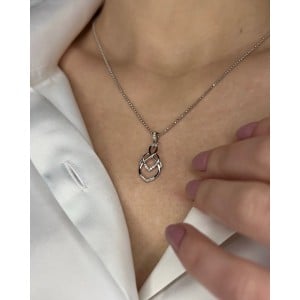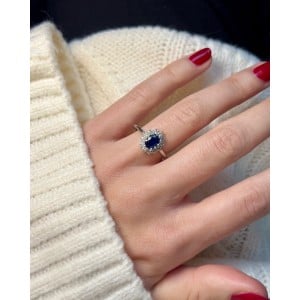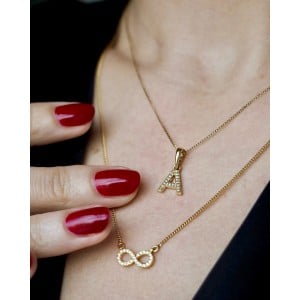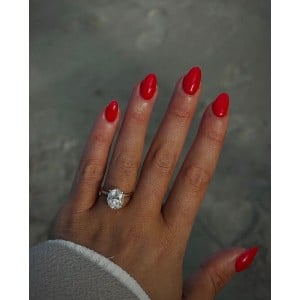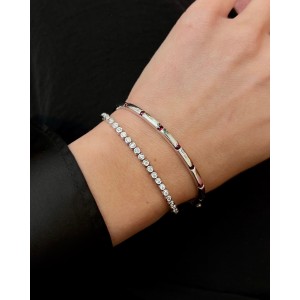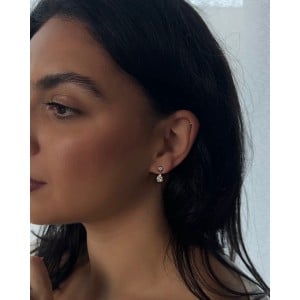Yellow Gold Necklace & Pendants
The warmth and glow of a 9K or 18K yellow gold necklace evokes feelings of love, passion and illumination. A striking precious metal that can look both soft and bold, our collection of 9k and 18k yellow gold necklaces is a classic favourite. If you're looking for a initial diamond necklace, at Abelini we have personalised initial pendants alongside shimmering solitaire and pear shape precious gems. If you want something to signify your love, you’ll find double heart and diamond circle necklaces. And for delicate and brilliant splendour, we’ve got floating teardrop diamond designs and glistening bow motifs. Whether you want a piece of jewellery that is chic, cute or classic, our women’s necklaces showcase the deliciously warm radiance and regality of yellow gold. As an alternative to yellow gold, browse our 9K or 18K rose gold necklaces. Read More >>


Pendant Necklaces Yellow Gold FAQs
One way of knowing if your necklace is real gold is to look at the hallmarks. Usually, necklaces will be engraved with a stamp on the clasp. The stamp identifies the purity of the gold necklace, for example, 10K, 14K, 18K, or 24K.
You can also check your necklace with a powerful magnet. Real Gold will not react to a magnet. If your chain is above 10K and sticks to a magnet, this would indicate a high percentage of other metals in the necklace.
If you find your necklace is starting to tarnish and leaves a green colour on your skin, this is another sign your necklace is not real gold.
The most reliable way to tell if your necklace is real gold is to have a professional jewellery appraisal. Although this will cost you money, you will have peace of mind knowing that an expert has confirmed your necklace is real gold.
The value of a gold necklace depends on several different factors. The first step is to find out how much the pure gold in it is worth. This is dependent on the market price of gold, which changes every day. You can easily look this figure up, however, you should remember that the price of gold quoted on commodity exchanges doesn’t accurately reflect the money you could get for your necklace if you decide to sell it.
To find the amount of pure gold in your necklace, you will need to weigh it. You should remove any stones first, and get an accurate weight. Once you’ve got the total weight of your necklace, you can find out the weight of the pure gold it contains, which is the biggest factor in how much your necklace will be worth.
By multiplying the weight of your necklace by the percentage of gold content, you can find out the amount of pure gold inside. A 24K necklace is 100% gold, an 18K necklace is 75% gold, and a 14K is 58.3% gold. For example, if you have a 14K necklace that weighs 8 grams, then the pure gold in it will be 58.3% of that number or about 4.7 grams.
The worth of a gold necklace is also dependent on the style of the chain, and any pendants or stones in the jewellery.
In recent years, mixing gold and silver jewellery has become a huge trend, and is considered a modern and stylish way to accessorise.
When combining silver earrings with a gold necklace, you might be pleasantly surprised how chic and on-trend this looks, as it is no longer considered a faux-pas to mix metals. Combining silver earrings with a gold necklace gives you the freedom to be playful with your jewellery, and really express your personality or mood.
If you want to wear silver earrings with a gold necklace, rather than choosing your pieces based on colour, select them based on styles you think would go well together. If you are a bit unsure about the mixed metals trend, start with smaller earrings and a more dainty and delicate necklace before building up to more bold pieces.
Another great tip when mixing silver earrings with a gold necklace is to repeat both metals once more throughout your look. Aim to have an even number of both silver and gold pieces of jewellery. This creates a more intentional and sophisticated outfit.
Maintenance of your gold necklace is always an important practice to know, especially when it comes to daily activities like taking a shower and sleeping.
The general rule when it comes to wearing gold necklaces in the shower is to try and avoid it as much as possible, especially on a regular basis. Wearing a gold necklace in the shower will not harm the metal itself, but it can reduce the shine of the necklace, making it appear dull, or tarnished.
Pure gold will not rust when in contact with water, however, many necklaces contain other metals too. These metals can react with the shower gels, perfumes and colognes, and other products typically used in the shower, and end up ruined.
Sleeping with your gold necklace on is generally not recommended if you want to keep your necklace intact for as long as possible. Although gold necklaces are usually strong, when you sleep in your necklace, you do risk breaking it. When you move in your sleep, the chain links wear against each other, increasing the chance of them becoming weaker.
To keep your gold necklace looking its absolute best, it is recommended to clean it every few weeks. Luckily, cleaning gold necklaces at home doesn’t have to be difficult or expensive.
One way of keeping your gold necklace clean and sparkly is to simply fill a bowl with warm water and a few drops of washing-up liquid. Leave your necklace to soak for 10-15 minutes, then use a cloth or very soft brush to loosen any dirt between chain links. Finally, rinse off the necklace under the tap, and pat it try using a kitchen towel or cloth.
When cleaning your gold necklace, there are a few things to avoid. Stay away from using soap with any unknown ingredients. Basic washing-up liquid is fine, but it is very important to avoid using any cleaning products that are too harsh like bleach, as chlorine can permanently discolour or damage your necklace.
If your necklace or pendant contains gemstones, you can shine them with a gem cloth, which can be purchased inexpensively. However, before cleaning any gold necklaces containing gemstones, it is advised you ask your jeweller about the safest at-home cleaning methods to use. Each stone has different characteristics, so the best cleaning techniques will depend.





























































































































































